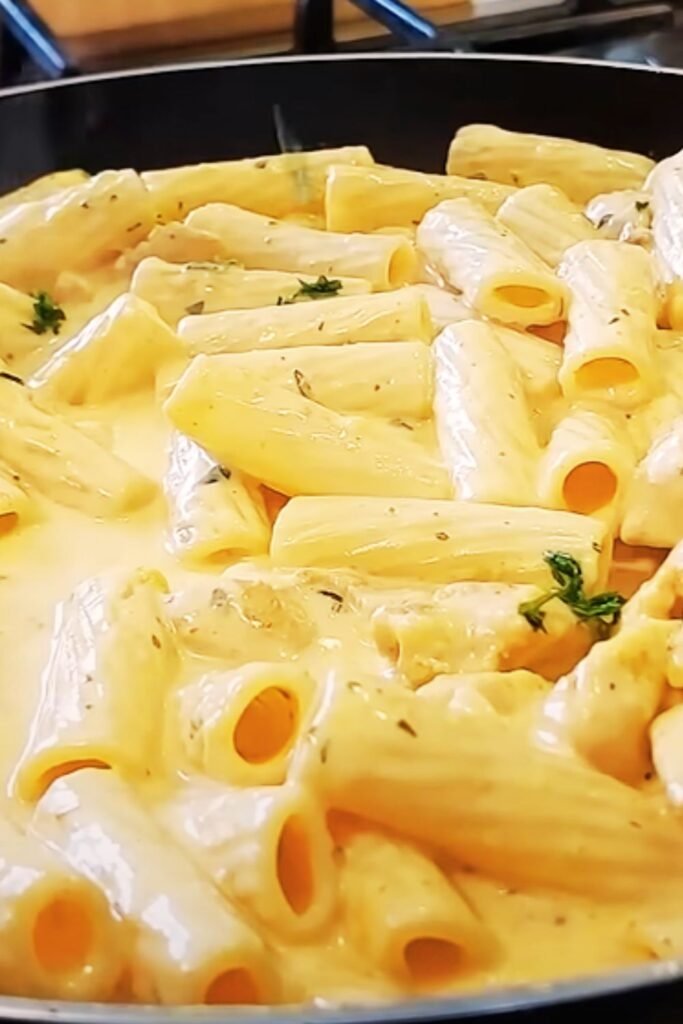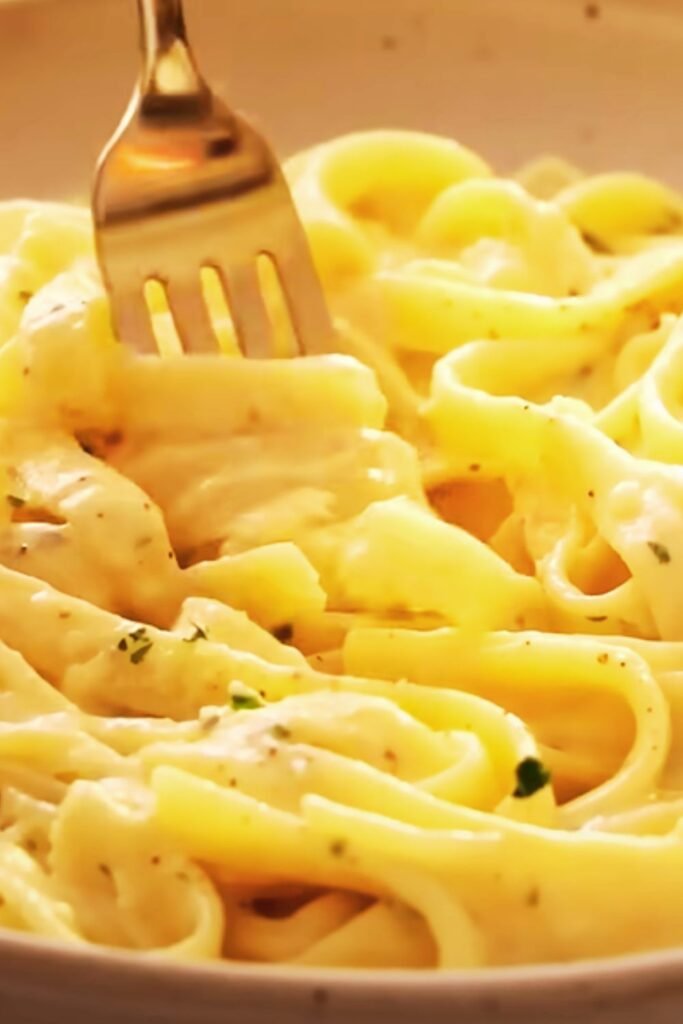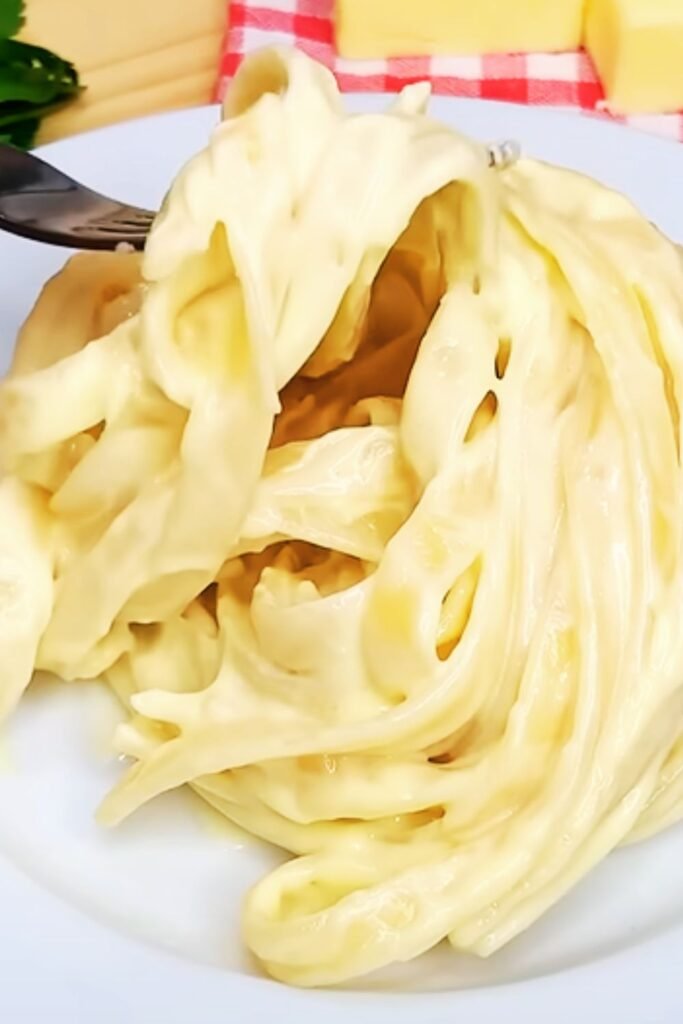There’s something magical about a perfectly executed Alfredo sauce. That velvety, rich texture coating each strand of pasta, delivering a burst of flavor with every bite. After years of experimenting in my kitchen and countless pasta nights with friends and family, I’ve perfected what I confidently call the ultimate Alfredo sauce recipe. Today, I’m sharing all my secrets to help you create this classic Italian-American comfort food right in your own kitchen.
What Makes a Great Alfredo Sauce?
Before diving into the recipe, let’s understand what makes an exceptional Alfredo sauce. The original Roman dish “Fettuccine Alfredo” was simply pasta tossed with butter and Parmesan cheese. However, the Americanized version we know today incorporates heavy cream, creating that signature rich texture we all love.
A truly great Alfredo sauce balances several key elements:
- Richness without being overwhelmingly heavy
- Smooth, silky texture with no graininess
- Deep flavor complexity beyond just cream and cheese
- The perfect consistency that clings to pasta without clumping
My recipe addresses all these factors with carefully selected ingredients and precise techniques. Let’s get started!
The Essential Ingredients
The quality of your ingredients makes all the difference in a simple sauce like Alfredo. Here’s what you’ll need:
| Ingredient | Amount | Notes |
|---|---|---|
| Unsalted butter | 6 tablespoons (85g) | European-style butter with higher butterfat content works best |
| Heavy cream | 2 cups (480ml) | Look for cream with at least 36% milk fat |
| Garlic cloves | 3-4 medium | Freshly minced, not pre-packaged |
| Parmigiano-Reggiano | 1.5 cups (150g) | Freshly grated from a block, never pre-shredded |
| Pecorino Romano | 1/2 cup (50g) | Adds sharpness and depth |
| White pepper | 1/4 teaspoon | More subtle than black pepper |
| Nutmeg | 1 pinch | Freshly grated if possible |
| Salt | To taste | Start with 1/4 teaspoon |
| Fresh pasta | 1 pound (450g) | Fettuccine is traditional, but any ribbon pasta works |
Why These Specific Ingredients Matter
Butter: I use unsalted European-style butter with higher fat content because it creates a richer foundation and lets me control the saltiness precisely. The butter’s quality directly impacts the sauce’s final texture.
Heavy Cream: With at least 36% milk fat, true heavy cream gives the sauce its luxurious body. Light cream or half-and-half simply won’t achieve the same results.
Cheese: This is where many recipes fall short. Pre-grated cheese contains anti-caking agents that prevent proper melting. Always grate your cheese fresh from a block. The blend of Parmigiano-Reggiano and Pecorino Romano creates the perfect balance of nutty, salty, and umami flavors.
Seasonings: White pepper integrates visually while providing heat. Nutmeg adds that subtle background warmth that enhances cream-based sauces without overtaking them.

Equipment You’ll Need
Having the right tools makes the process smoother:
- Large, heavy-bottomed skillet or saucepan
- Wooden spoon or silicone spatula
- Microplane or fine grater for cheese and nutmeg
- Measuring cups and spoons
- Large pot for pasta
- Colander or pasta spider
- Tongs for serving
Step-by-Step Method
Now for the exciting part! Follow these steps carefully for the perfect sauce:
1. Prepare Your Ingredients
- Grate all cheese and set aside at room temperature for 15-20 minutes
- Mince garlic cloves
- Measure remaining ingredients
- Start heating water for pasta
Pro tip: Room temperature cheese melts more evenly and helps prevent clumping in your sauce.
2. Begin the Sauce Base
- Melt butter in your skillet over medium-low heat
- Add minced garlic and cook just until fragrant, about 30 seconds (don’t brown it!)
- Slowly pour in the heavy cream while whisking
- Bring the mixture to a gentle simmer (never boil)
- Reduce heat to low and simmer for 5-7 minutes until slightly thickened
Technique note: Keep the heat gentle. Boiling can cause the cream to break and become grainy.
3. Cook the Pasta
While the sauce is simmering:
- Add salt to rapidly boiling water (it should taste like seawater)
- Cook pasta about 1 minute less than package directions for al dente
- Reserve 1 cup of pasta water before draining
4. Finish the Sauce
This is the critical stage where many recipes fail, but my method ensures success:
- Turn heat to the lowest setting
- Remove pan from heat completely
- Add cheese in 3-4 small batches, whisking continuously between additions
- Return pan to very low heat only if needed to help melting
- Add white pepper and nutmeg
- If sauce is too thick, add reserved pasta water a tablespoon at a time
- Taste and adjust salt as needed

5. Combine with Pasta
- Add drained pasta directly to the sauce
- Toss gently with tongs to coat every strand
- If sauce thickens too much, add small amounts of reserved pasta water
- Continue tossing for about 1-2 minutes until pasta absorbs some sauce
Troubleshooting Common Issues
Even experienced cooks can encounter problems with Alfredo sauce. Here’s how to fix them:
| Problem | Cause | Solution |
|---|---|---|
| Grainy sauce | Cheese added too quickly or heat too high | Remove from heat, add a splash of cream, whisk vigorously |
| Too thick | Sauce reduced too much | Add reserved pasta water or cream, one tablespoon at a time |
| Too thin | Not enough reduction or cheese | Simmer gently longer or add small amounts of grated cheese |
| Sauce separating | Heat too high or overcooked | Lower heat immediately, whisk in cold butter or cream |
| Bland flavor | Insufficient seasoning or low-quality cheese | Add more Pecorino Romano and a pinch of salt |
Variations to Try
Once you’ve mastered this basic recipe, try these delicious variations:
Herb-Infused Alfredo
Add 2 tablespoons of chopped fresh herbs like basil, chives, or tarragon just before serving.
Roasted Garlic Alfredo
Replace raw garlic with a whole head of roasted garlic for sweeter, deeper flavor.
Mushroom Alfredo
Sauté 8 ounces of sliced mushrooms (cremini, shiitake, or a mix) until golden before adding cream.
Lemon Alfredo
Add 1 teaspoon of lemon zest and 1 tablespoon of juice for a bright, citrusy version.
Spinach Alfredo
Wilt 2 cups of fresh baby spinach into the finished sauce just before adding pasta.
Serving Suggestions
Alfredo sauce is versatile beyond just fettuccine! Here are some serving ideas:
- Toss with cheese-filled tortellini for an extra decadent dish
- Use as a dipping sauce for breadsticks or garlic bread
- Top with grilled chicken and roasted red peppers
- Add to a white lasagna with spinach and mushrooms
- Drizzle over steamed vegetables for an elegant side dish
- Use as a base for a white pizza with roasted garlic and arugula
- Create a luxurious seafood pasta with shrimp or scallops
- Make a deluxe mac and cheese by combining with your favorite cheesy pasta bake

Storage and Reheating Tips
Alfredo sauce is best enjoyed fresh, but you can:
- Store leftovers in an airtight container in the refrigerator for up to 3 days
- Reheat gently on the stovetop over low heat, adding a splash of cream
- Stir constantly while reheating to prevent separation
- Never microwave Alfredo sauce as it will separate and become oily
- Freeze is not recommended as the texture will change significantly
Nutritional Information
For those tracking their intake, here’s the approximate nutritional breakdown per serving (1/6 of recipe, sauce only):
| Nutrient | Amount |
|---|---|
| Calories | 385 |
| Total Fat | 37g |
| Saturated Fat | 23g |
| Cholesterol | 125mg |
| Sodium | 520mg |
| Total Carbohydrates | 3g |
| Protein | 12g |
Kitchen Science: Why This Recipe Works
Understanding the science behind Alfredo sauce helps you create perfect results every time:
- Emulsification: The fat in butter and cream combines with the water content to create a stable mixture when heated properly.
- Protein Structure: The proteins in cheese melt at specific temperatures. Going too hot causes them to seize and create graininess.
- Starch Assistance: The small amount of starchy pasta water helps bind the sauce together through its natural gelatinized starches.
- Salt and Acids: These flavor enhancers also affect protein structure, which is why adding them at the right time matters.
- Temperature Control: The most crucial scientific principle in this recipe is careful temperature management throughout the process.
Frequently Asked Questions
Q: Can I use pre-grated cheese to save time?
No, I strongly advise against it. Pre-grated cheese contains anti-caking agents like cellulose that prevent proper melting. The few minutes it takes to grate fresh cheese makes an enormous difference in the final texture.
Q: My sauce always breaks and gets grainy. What am I doing wrong?
You’re likely adding the cheese when the cream is too hot or adding it all at once. Remove the pan from heat completely before adding cheese in small batches, and only return to very low heat if necessary.
Q: Can I make this healthier with milk instead of cream?
While you can substitute half-and-half for some of the cream, using regular milk will result in a thin, less luxurious sauce. Consider making Alfredo as an occasional treat rather than compromising on ingredients.
Q: Why did my sauce thicken too much after adding the pasta?
Pasta continues to absorb liquid even after cooking. If your sauce thickens too much, gradually add small amounts of the reserved pasta water while tossing until you reach the desired consistency.
Q: My family doesn’t like garlic. Can I omit it?
Yes, though I recommend trying it with just one clove first, as it adds significant depth. Alternatively, you can infuse the cream with a whole garlic clove and remove it before adding cheese.
Q: How do I fix a broken sauce?
If your sauce separates, immediately remove it from heat and whisk in 1-2 tablespoons of cold heavy cream or a small piece of cold butter. Whisk vigorously until it comes back together.
Final Thoughts: The Secret to Restaurant-Quality Results
After years of perfecting this recipe, I’ve found that the difference between good and exceptional Alfredo sauce comes down to three factors:
- Patience: Taking your time with each step, especially when melting the cheese, makes all the difference.
- Temperature Control: Keeping heat gentle throughout the process prevents the most common failures.
- Quality Ingredients: With so few components, each one must be the best you can find.
Master these elements, and you’ll create an Alfredo sauce that rivals any restaurant version. Your family and friends will be amazed at how something seemingly simple can taste so incredibly good.
Remember that great cooking is about more than following instructions—it’s about understanding why each step matters. This recipe gives you both the how and the why, setting you up for success every time you make this classic comfort food.
Now that you have all my secrets, it’s time to head to the kitchen and create your own perfect pot of Alfredo sauce. Buon appetito!